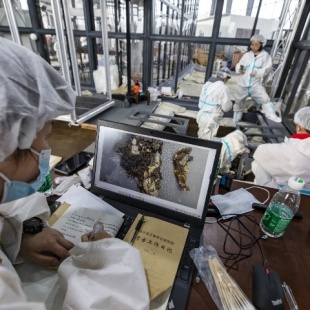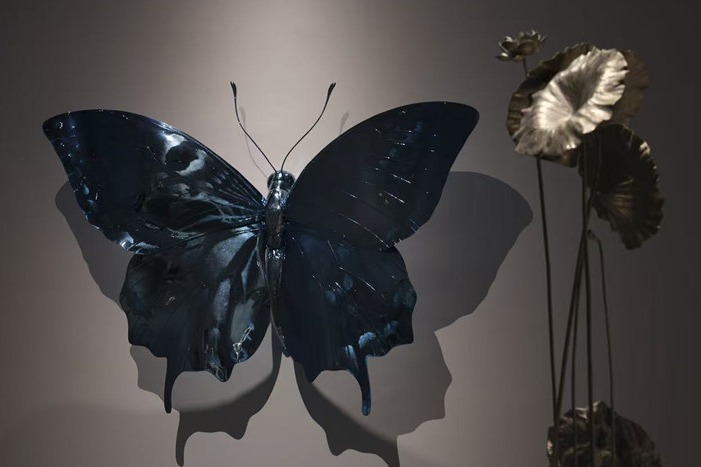Museum showcases vital clues to past


Wooden core
The artifacts on view at the museum are made from a gold and copper alloy, with gold accounting for 85 percent of their composition.
The cane, which is 143 cm long, 2.3 cm in diameter and weighs about 463 grams, consists of a wooden core, around which is wrapped pounded gold leaf. The wood has decayed, leaving only residue, but the gold leaf remains intact.
The design features two profiles, each of a sorcerer's head with a five-point crown, wearing triangular earrings and sporting broad smiles. There are also identical groups of decorative patterns, each featuring of a pair of birds and fish, back-to-back. An arrow overlaps the birds' necks and fish heads.
The majority of researchers think a cane was an important item in the ancient Shu king's regalia, symbolizing his political authority and divine power under the rule of theocracy.
Among ancient cultures in Egypt, Babylon, Greece and western Asia, a cane was commonly regarded as the symbol of the highest state power.
Some scholars speculate that the gold cane from the Sanxingdui site may have originated from northeast or western Asia and resulted from cultural exchanges between two civilizations.
It was unearthed at the site in 1986 after the Sichuan Provincial Archaeological Team took action to stop a local brick factory digging up the area.
Chen, the archaeologist who led the excavation team at the site, said that after the cane was found, he thought that it was made from gold, but he told onlookers it was copper, in case anybody tried to make off with it.
In response to a request from the team, the Guanghan county government sent 36 soldiers to guard the site where the cane was found.
The poor state of the artifacts on display at the Sanxingdui Museum, and their burial conditions, indicate that they had been intentionally burned or destroyed. A large fire appears to have caused the items to become charred, ruptured, disfigured, blistered or even to have completely melted.
According to researchers, it was common practice to set sacrificial offerings ablaze in ancient China.
The site where the two large sacrificial pits were unearthed in 1986 lies just 2.8 kilometers west of the Sanxingdui Museum. Chen said most of the key exhibits at the museum come from the two pits.
Ning Guoxia contributed to the story.





































